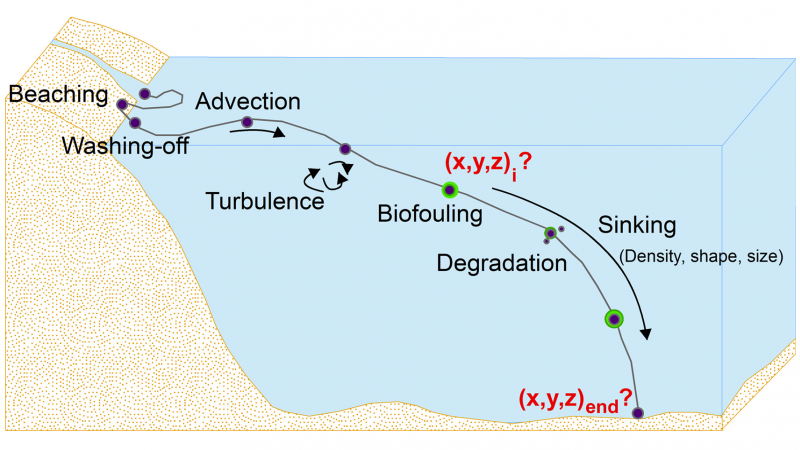TrackMPD v.1 model officially released

SARCCM is pleased to announce the release of TrackMPD v.1, a three-dimensional particle-tracking model for the transport of marine plastic debris in oceans and coastal systems. The model has been developed as a result of a collaboration between UNSW Canberra and the Jerusalem College of Technology. The power of TrackMPD lies in: (1) its compatibility with diverse formats of current-velocity inputs; and (2) its ability to extend the Lagrangian modelling of advection-diffusion by adding more-complex and realistic particle behaviours and physical processes, which can either be included or excluded depending on the application.
At present, TrackMPD can include beaching, washing-off, degradation, biofouling, sinking, and deposition. In particular, sinking and deposition depend on particle behaviour, which relies on the particle density, size, shape, fouling state, and degradation state. The model can incorporate new processes and behaviours, and change the implementation of already existing ones, with new experimental findings or particular applications.
In addition, TrackMPD has a structured and coherent modelling framework to satisfy the criteria of flexibility, extendibility, and interchangeability. The TrackMPD code is licensed under GPL (GNU General Public License). The code is open source and may be used freely for non-commercial and commercial purposes.
Users can find the code, the term of use and a getting-started tutorial in GitHub: https://github.com/IJalonRojas/TrackMPD
For further details, please refer to this publication: Jalón-Rojas et al. (2019). A 3D numerical model to Track Marine Plastic Debris (TrackMPD): Sensitivity of microplastic trajectories and fates to particle dynamical properties and physical processes. It is published and available via this link.

